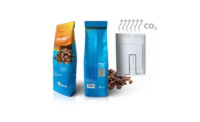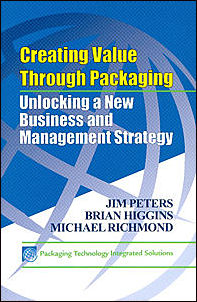Minute Maid: Freshly squeezed design
By maintaining its most recognized features, but updating its logo and imagery, the Minute Maid brand aimed to contemporize its packaging, reconnect it to nature and, of course, please consumers.

 The story: Before Minute Maid orange juice was packaged in ready-to-drink cartons or bottles, and before it was made into a frozen concentrate, it was developed as orange juice powder for the U.S. Army during WWII. When troops realized the end of the war was in sight, though, they cancelled their orders. And while the Florida Foods Corporation moved ahead with production, thinking it would sell the product to civilians, it soon realized the format wasn’t as easy to manufacture commercially. Instead, the company sold the product as a frozen orange juice concentrate, an intermediate step in creating the powder. The product became a success, and was named “Minute Maid” for its quick preparation. In 1960, Coca-Cola acquired the company, taking its first venture outside of traditional soft drinks, and then introduced ready-to-drink chilled orange juice in 1973.
The story: Before Minute Maid orange juice was packaged in ready-to-drink cartons or bottles, and before it was made into a frozen concentrate, it was developed as orange juice powder for the U.S. Army during WWII. When troops realized the end of the war was in sight, though, they cancelled their orders. And while the Florida Foods Corporation moved ahead with production, thinking it would sell the product to civilians, it soon realized the format wasn’t as easy to manufacture commercially. Instead, the company sold the product as a frozen orange juice concentrate, an intermediate step in creating the powder. The product became a success, and was named “Minute Maid” for its quick preparation. In 1960, Coca-Cola acquired the company, taking its first venture outside of traditional soft drinks, and then introduced ready-to-drink chilled orange juice in 1973.
The challenge: Because Minute Maid had grown so much over the years and entered into so many different markets, its packaging had become somewhat inconsistent. Plus, at its age, the brand was facing an opportunity to modernize and freshen its design.
The goal: Partnering with Duffy & Partners and CMA Brand Presence, Coca-Cola’s global design team looked to revamp Minute Maid’s packaging along with its master brand counterparts in other global markets. The new design aims for a unified look across Coca-Cola’s global juice brands, and simplicity for its consumers.
The solution: Designers knew that any modifications to the packaging’s design had to retain brand recognition, and enhance the brand’s connection to nature. But before the design team made any changes, it had to evaluate the current state of the packaging. To do so, it conducted research, which concluded that consumers closely associated the black rectangle and white typography with the Minute Maid brand.
Designers kept those elements, but added a green horizon mark to the top of the logo.
“It’s a green line that links our new identity back to our core business strategy, which is called our grove to glass strategy,” says Tom Farrell, design director, Coca-Cola global design group. The strategy refers to Coca-Cola’s supply chain, from its fruit growers, to its juicing process, to its packaging, Farrell adds.
Rounded edges on the new logo also give it a more contemporary look without taking away from the brand’s historic appeal.
 Previously, the packaging featured sunshine graphics at the top of the carton. To better reinforce the brand’s connection to nature and the juice as a source of fruit, the new design features a leaf canopy.
Previously, the packaging featured sunshine graphics at the top of the carton. To better reinforce the brand’s connection to nature and the juice as a source of fruit, the new design features a leaf canopy.
But the most noticeable change in the packaging comes through the orange imagery. Research indicated that the existing fruit images held no equity for the brand, so the design team was free to go in a different direction. They studied consumer behavior in the produce aisle, including how shoppers selected the best fruit, and tried to appeal to those behaviors through design.
As a result, each Minute Maid carton features an orange slice resting on top of two whole oranges, only half of which can be seen on the package. The orange slice, which resembles a smile, puts out a feeling of optimism while providing consumers with taste appeal. And when the packages are placed next to each other on the shelf, the produce aisle comes to life: The orange imagery interlocks to form whole oranges, creating strong shelf impact.
“We consumer tested in North America, Latin America, Europe, Eastern Europe, Asia, and we got persistent responses from consumers in terms of the need to connect to nature, the need for taste appeal, the need for juiciness and appetite appeal, and simplicity of information design and branding,” Farrell says.
To enhance simplicity for consumers, each juice variety is color coded for clear product differentiation and shoppability.
The result: The new Minute Maid packaging launched in the United States in November 2009. The design system will be implemented among Coca-Cola’s key juice brands globally over 2010. Thus far, Farrell reports positive responses from retailers and consumers in terms of shelf impact and shoppability.
Stephanie Hildebrandt is the associate editor of BRANDPACKAGING. Contact her at hildebrandts@bnpmedia.com.
Where to go for more information…
Design execution
Duffy & Partners (612.548.2333, www.duffy.com)
CMA Brand Presence (713.834.0180, www.cmadesign.com)

AFTER

BEFORE
The challenge: Because Minute Maid had grown so much over the years and entered into so many different markets, its packaging had become somewhat inconsistent. Plus, at its age, the brand was facing an opportunity to modernize and freshen its design.
The goal: Partnering with Duffy & Partners and CMA Brand Presence, Coca-Cola’s global design team looked to revamp Minute Maid’s packaging along with its master brand counterparts in other global markets. The new design aims for a unified look across Coca-Cola’s global juice brands, and simplicity for its consumers.
The solution: Designers knew that any modifications to the packaging’s design had to retain brand recognition, and enhance the brand’s connection to nature. But before the design team made any changes, it had to evaluate the current state of the packaging. To do so, it conducted research, which concluded that consumers closely associated the black rectangle and white typography with the Minute Maid brand.
Designers kept those elements, but added a green horizon mark to the top of the logo.
“It’s a green line that links our new identity back to our core business strategy, which is called our grove to glass strategy,” says Tom Farrell, design director, Coca-Cola global design group. The strategy refers to Coca-Cola’s supply chain, from its fruit growers, to its juicing process, to its packaging, Farrell adds.
Rounded edges on the new logo also give it a more contemporary look without taking away from the brand’s historic appeal.

New global juice portfolio packaging
But the most noticeable change in the packaging comes through the orange imagery. Research indicated that the existing fruit images held no equity for the brand, so the design team was free to go in a different direction. They studied consumer behavior in the produce aisle, including how shoppers selected the best fruit, and tried to appeal to those behaviors through design.
As a result, each Minute Maid carton features an orange slice resting on top of two whole oranges, only half of which can be seen on the package. The orange slice, which resembles a smile, puts out a feeling of optimism while providing consumers with taste appeal. And when the packages are placed next to each other on the shelf, the produce aisle comes to life: The orange imagery interlocks to form whole oranges, creating strong shelf impact.
“We consumer tested in North America, Latin America, Europe, Eastern Europe, Asia, and we got persistent responses from consumers in terms of the need to connect to nature, the need for taste appeal, the need for juiciness and appetite appeal, and simplicity of information design and branding,” Farrell says.
To enhance simplicity for consumers, each juice variety is color coded for clear product differentiation and shoppability.
The result: The new Minute Maid packaging launched in the United States in November 2009. The design system will be implemented among Coca-Cola’s key juice brands globally over 2010. Thus far, Farrell reports positive responses from retailers and consumers in terms of shelf impact and shoppability.
Stephanie Hildebrandt is the associate editor of BRANDPACKAGING. Contact her at hildebrandts@bnpmedia.com.
Where to go for more information…
Design execution
Duffy & Partners (612.548.2333, www.duffy.com)
CMA Brand Presence (713.834.0180, www.cmadesign.com)
Looking for a reprint of this article?
From high-res PDFs to custom plaques, order your copy today!






